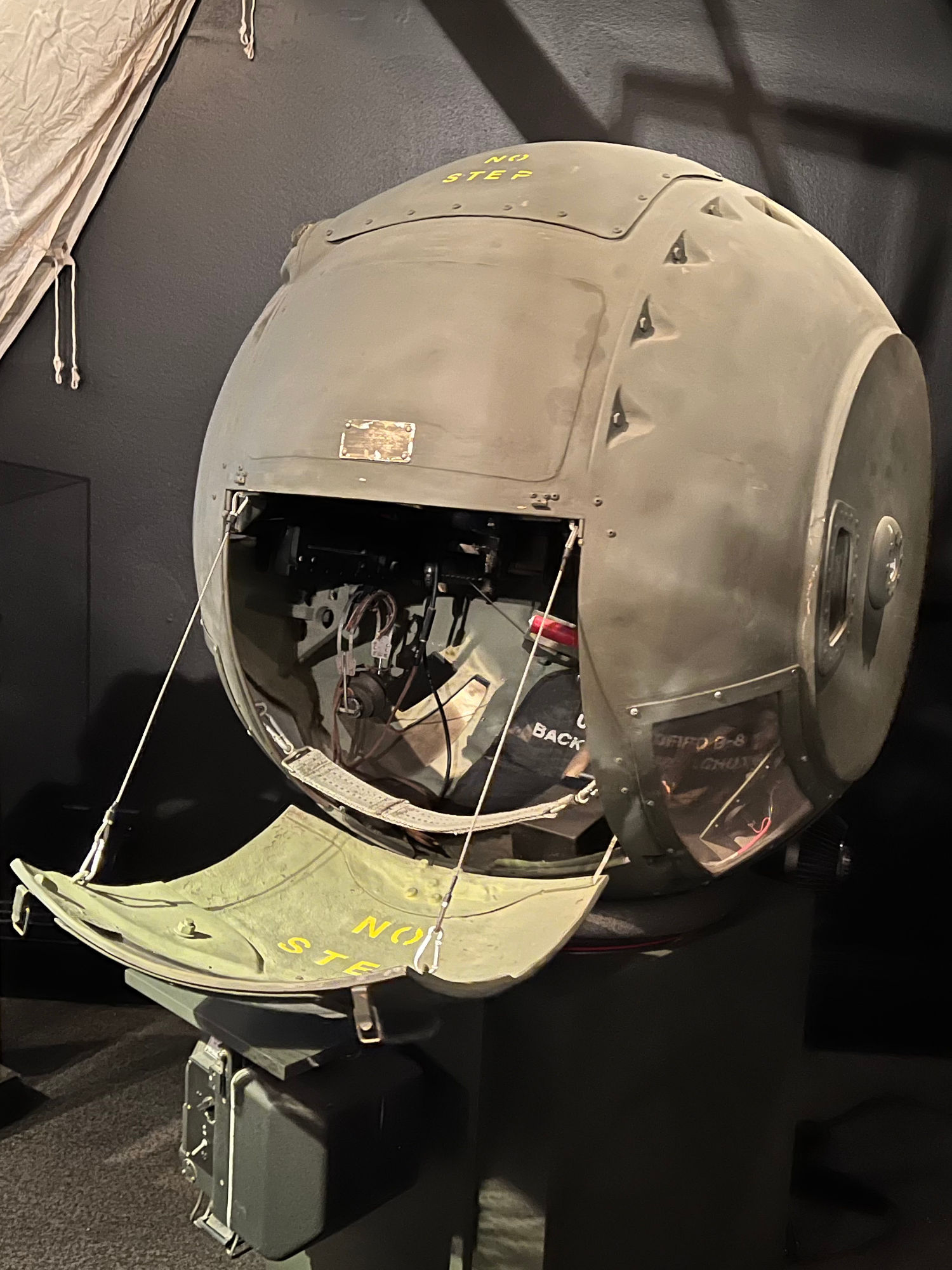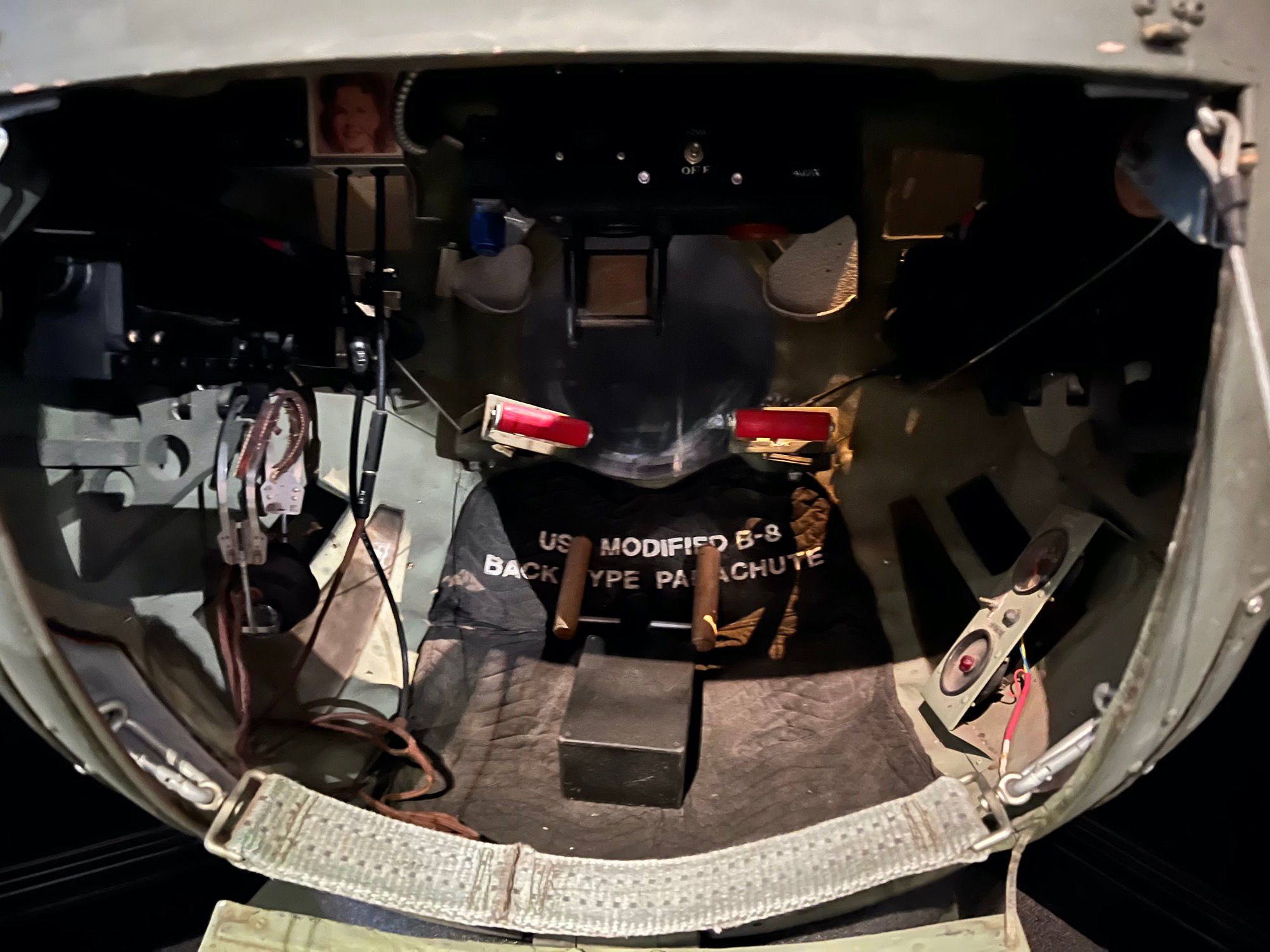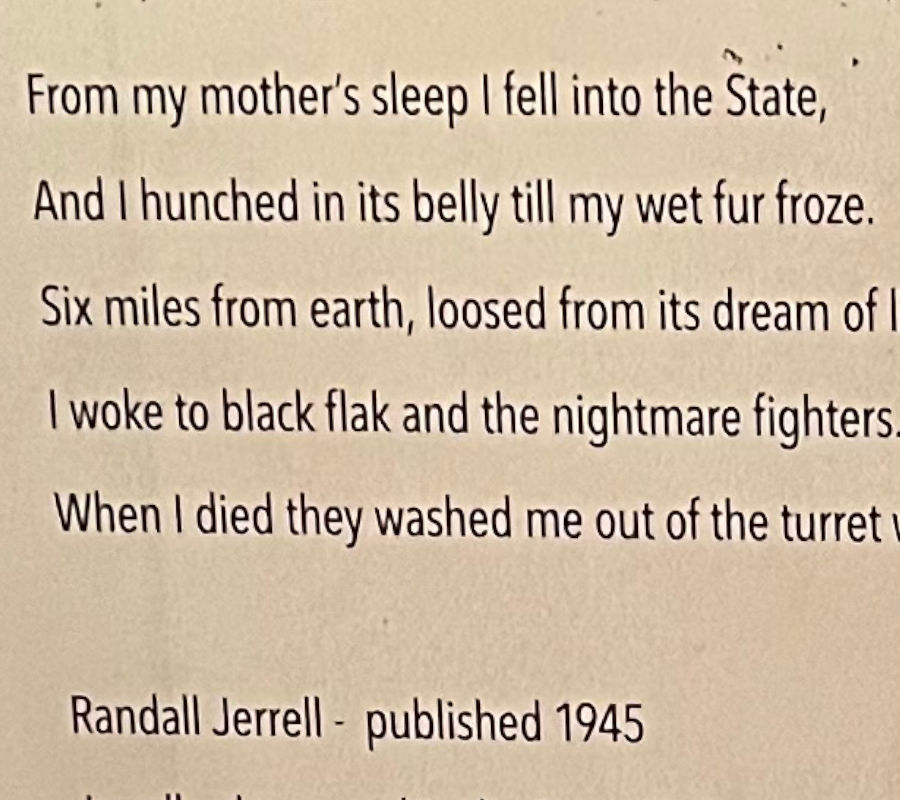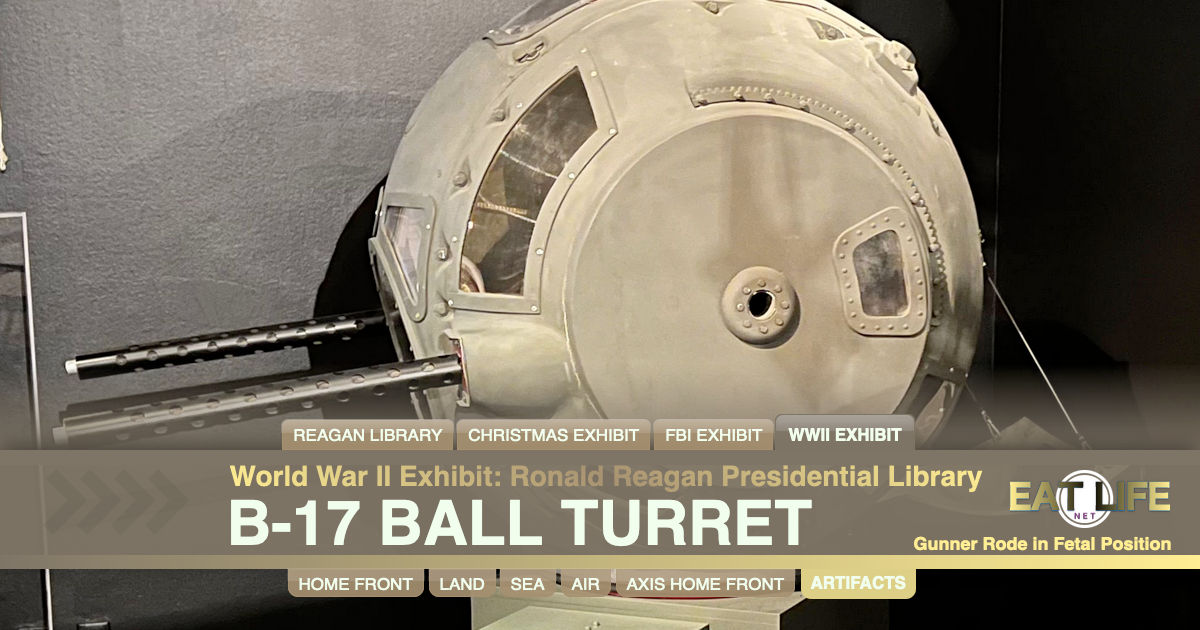




WIKIPEDIAA Ball Turret
Spherical-shaped, altazimuth mount gun turret, fitted to some American-built aircraft during World War II. The name arose from the turret's spherical housing.It was a manned turret, as distinct from remote-controlled turrets also in use. The turret held the gunner, two heavy machine guns, ammunition, and sights. The Sperry Corporation designed ventral versions that became the most common version; thus, the term "ball turret" generally indicates these versions.
The gunner was forced to assume a fetal position within the turret with his back and head against the rear wall, his hips at the bottom, and his legs held in mid-air by two footrests on the front wall. This left him positioned with his eyes roughly level with the pair of light-barrel Browning AN/M2 .50 caliber machine guns which extended through the entire turret, located to either side of the gunner. The charging handles were located too close to the gunner to be operated easily, so a cable was attached to the handle through pulleys to a handle near the front of the turret. Another factor was that not all stoppages could be corrected by charging (cocking) the guns. In many cases, when a stoppage occurred, it was necessary for the gunner to "reload" the gun, which required access to the firing chamber of the guns.
Access was severely restricted by the guns' location in the small turret. Normally, the gunner accessed the firing chamber by releasing a latch and raising the cover to a position perpendicular to the gun but this was not possible in the ball turret. To remedy that, the front end of the cover was "slotted". The gunner released the latch and removed the cover which allowed space to clear the action. Small ammunition boxes rested on the top of the turret and additional ammunition belts fed the turret by means of a chute system. A reflector sight was hung from the top of the turret, positioned roughly between the gunner's feet.








